On 30 September 2022, Sushil Reddy embarked on a remarkable road trip through the historic Golden Quadrilateral route, crossing 35 cities across 13 states while covering a mammoth distance of 8,849 km in 70 days.
This was yet another chapter of ‘The SunPedal Ride’, a global outreach project Sushil started in 2016 to have “conversations about clean and sustainable mobility via endurance journeys undertaken on zero tail-pipe emission vehicles”.
Starting from Delhi, the Mumbai-based engineer took the MG ZS EV, an electric SUV, through different corners of the country to educate and raise awareness about the necessity of clean energy and sustainable mobility at schools, universities and other institutions of learning. At these sites, Sushil offered test drives for people to understand how the driving experience is different in EVs “so that they appreciate e-mobility”.
Aside from Sushil, there were some friends who travelled with him on the MG ZS EV during different segments of the journey. These include Rajendra Bhaskar, Avishma Matta, Aakarsh Shamanur, Mirik Gogri, Utkarsh Rastogi, Barbara Vermeire and Bram Biemans. Sushil, however, was the only constant in the car during this entire journey.
Speaking to The Better India after his journey, he says, “As a part of The SunPedal Ride awareness project, my idea was to do a long distance journey on an electric car in India since I had some questions regarding range, charging, performance of the electric cars, etc.”
“I thought that it could be a good learning experience. Many are still sceptical when it comes to adoption of newer technologies like electric vehicles, especially questions around range anxiety.”
“So, I reached out to the MG Motor team in Gurugram and they liked the idea of me embarking on such a journey to generate greater public confidence about electric vehicles (EVs) and entice more people to adopt them. The MG Motor team agreed to provide the MG ZS EV for the 70-day journey. A reason for choosing the Golden Quadrilateral national highway network as the route was because it is a symbolic network of roads connecting four major cities (Delhi-Kolkata-Chennai-Mumbai) in four different regions (North, East, South, West),” he adds.
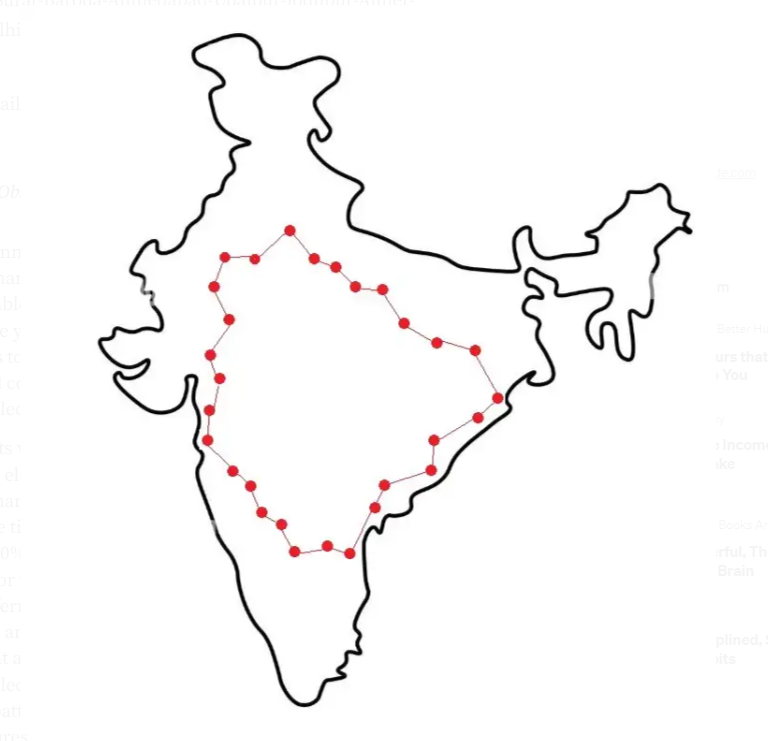
An engineer on a mission
Growing up in Mumbai, Sushil earned his MTech (dual degree) from IIT-Bombay in energy science and engineering. Between 2013 and 2016, he worked in a few organisations primarily engaged in the solar energy sector.
It was in the summer of 2016 when he started The SunPedal Ride project alongside friends.
Sushil and his friends undertook their first long distance journey, embarking on a 7,424 kilometre-long drive across India using a custom-built solar powered electric bicycle with a safety vehicle “to raise awareness about solar energy and sustainable mobility”.
The journey took 79 days and even earned him recognition in the Guinness Book of World Records for the longest journey taken on an e-bicycle. In 2017-2018, he earned another postgraduate degree in sustainability and social innovation from HEC Paris, a business school.
Since founding The SunPedal Ride, he has embarked on a variety of long-distance trips in the United States, Iceland, France and other parts of India as well.
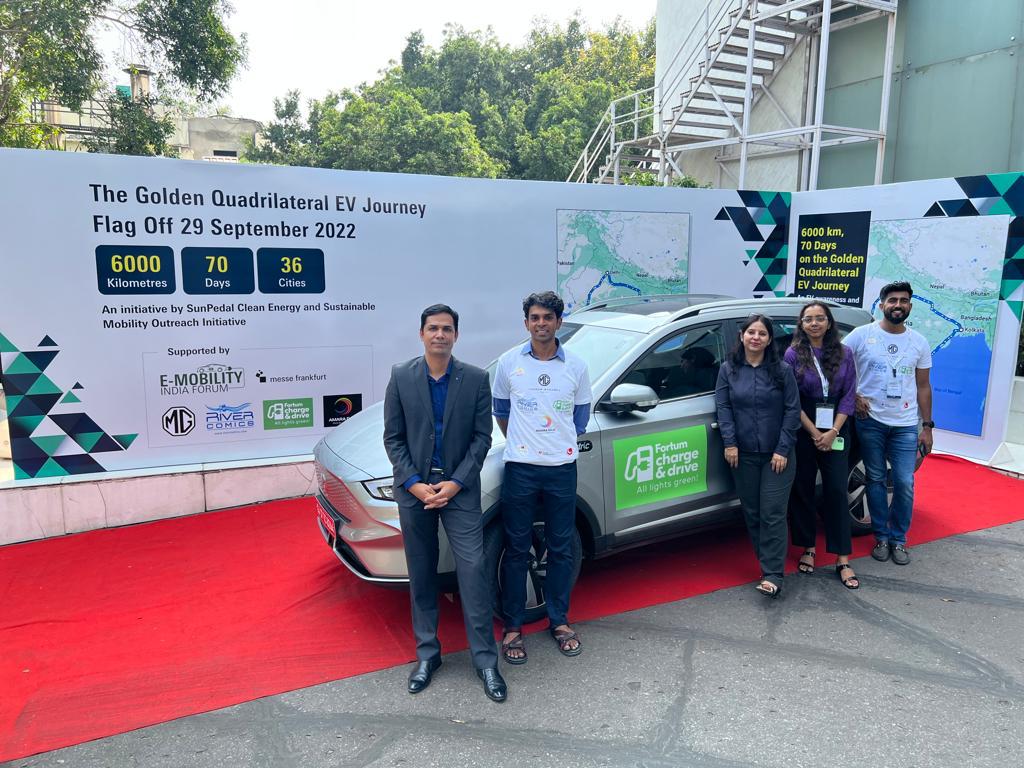
Charging your EV on the Golden Quadrilateral
Covering distances from 120 km to 340 km on a given day naturally give rise to concerns surrounding the ability to charge your vehicle. How did Sushil overcome these?
“Interestingly, we charged the MG ZS EV only 12 times at DC fast-charging stations along this route, costing us Rs 2,851. The rest of the time, we charged the car overnight using a portable AC charging cable that could be plugged into any16 Amp socket (3 pin heavy duty socket which is usually used to run loads like air conditioners, geysers, water coolers etc),” he says.
“Fortunately, many hosts helped us charge our car overnight for free including hotels and universities where we were put up. For example, IIT-Kanpur, which has a community EV charging system, allowed us to charge our vehicle overnight. But the entire journey was planned according to the worst case scenario when it comes to charging. The maximum distance covered in a day was 340 km (within the real world range of the MG ZS EV),” he adds.
On an average, according to Sushil, DC fast-charging costs Rs 3 per km since the average price of charging at a DC fast charger today is Rs 18/- per kWh. AC slow-charging on a 16 Amp socket costs less than INR 2/- per km depending on the electricity tariff of a given state. Having said that, AC slow charging can take more than 20 hours for a full charge.
“Now, if you compare this with operating an internal combustion engine (ICE) vehicle including petrol/diesel costs, the running cost is anywhere between INR 7-10 per km. In other words, the running cost of an EV is nearly half that of an IC-engine vehicle,” he says.
For riders wanting to take long-distance journeys on EVs, Sushil has an important tip. “It’s important to carry an extension cord to access the 16 Amp plug point, which may not be available at a short distance near the parking area of the electric car,” he notes.
“Also, there was an intermittent power cut in Bihar where we were staying overnight. So, it took longer than expected for the car to charge that night. Charging time is a factor to take into account when you plan an EV journey, which could be a challenge,” he adds.
Meanwhile, assistance for Sushil came from online communities like Plugshare, a “very good community based resource” to locate EV charging stations across the world.
“Anybody can access the Plugshare website or app to plan for charging an EV. An interesting feature is that you can also leave a public review of an EV charger on Plugshare so that people can decide accordingly. Also, while planning this EV journey, I had posted about my plan in a community Telegram Group — PlugInIndia — where EV owners and enthusiasts discuss and share their experiences amongst themselves. As a resource, there are very good community online groups of EV owners who help each other today,” explains Sushil.
However, in a detailed blog where Sushil recounts every step of the journey, he does highlight one key challenge in travelling long distances on EVs.
“Network establishment at EV charging stations and managing multiple apps and digital wallets of EV charging station companies could be a challenge. But there are solutions today to eliminate this challenge like the QR code scanning ‘Charge-Thru’ process by Fortum Charge and Drive and YoCharge,” he notes.
Another key learning on charging infrastructure was how hotels are also cashing in on the EV revolution in India.
In his blog, Sushil noted, “We were hosted by the Wedlock Greens Hotel in Dhanbad where we could also charge the car using a 16 Amp slow charger at the hotel parking. It is good to see hotels such as Wedlock Greens to support sustainability outreach initiatives — leading by example, there was rain water harvesting and a solar powered cafe at the hotel.”
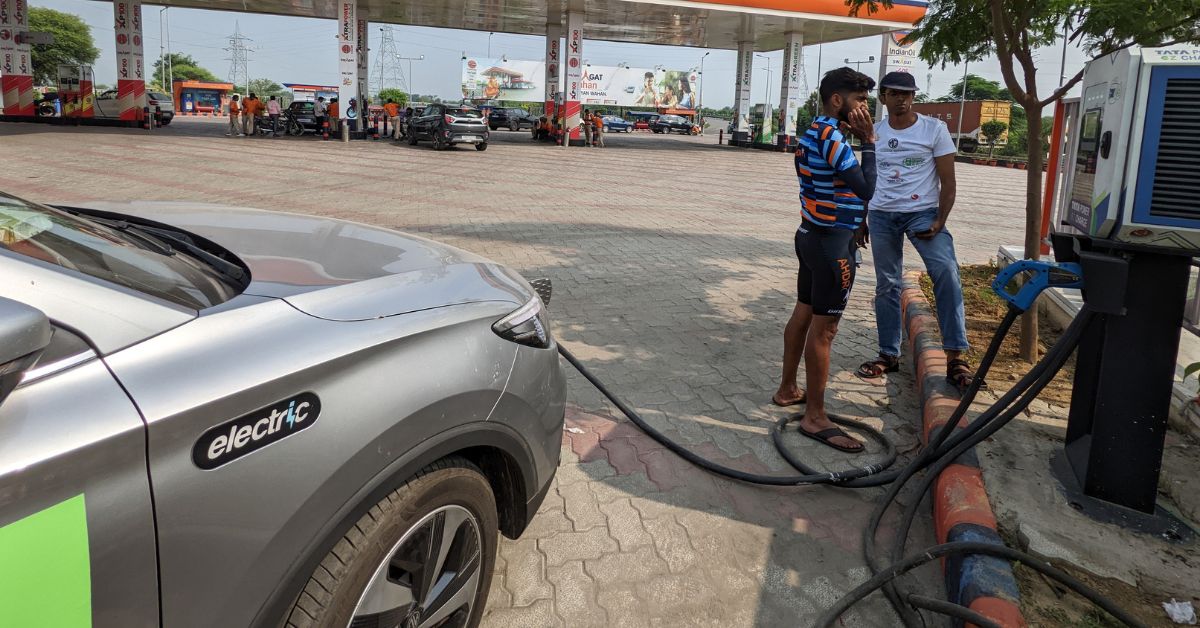
Driving an EV on the Golden Quadrilateral
The MG ZS EV offers a range of about 300 to 350 km (with a battery capacity of 50.3 kWh) on a single charge without compromising on the driving style at normal speeds, claims Sushil.
“Lower speeds will generally deliver a higher range due to lesser air drag and rolling resistance. Regeneration plays a key role in city driving due to frequent braking. Instant acceleration is very useful for overtaking on highways. We even touched speeds up to 150 kmph, but it’s not recommended since the range could drastically reduce.”
“The average speed on highways was about 75 kmph (usually no compromise on the driving speed). We touched 150 kmph on the Yamuna Expressway on the way to Agra, but only for a brief stretch,” he says.
During this journey, Sushil encountered one particularly tricky section from Lucknow to Varanasi.
“There is no DC Fast Charger on the direct route. It was a tight journey and we had to lower our speed to 60 kmph and also switch off the air conditioning to make it to Varanasi with 1% battery remaining. The key takeaway from this day was that driving styles affect the range in an EV. Also, switching off the AC can deliver an additional 20-30 km of range,” he says.
One of the biggest learnings during this journey was the need for advanced planning for charging (time and accessibility), which allows EVs to cover long distances.
“Also, it’s easier to access electricity than petrol or diesel. One cannot have a tank full of petrol/diesel at home, unlike electricity, to fuel the vehicle,” he adds.
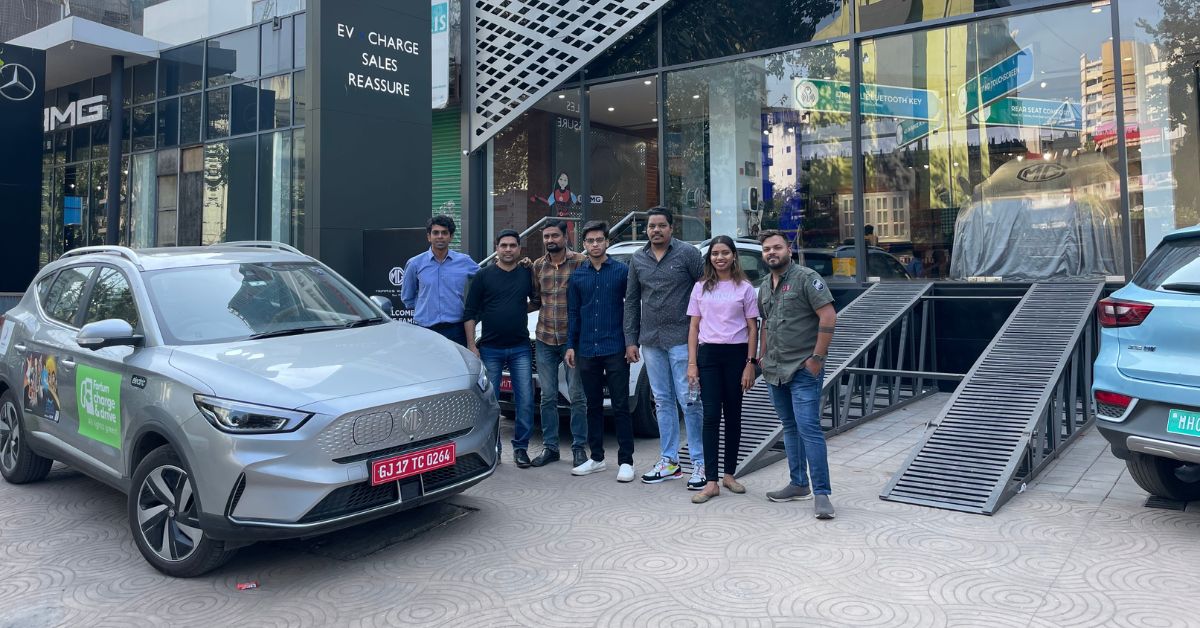
Educating young minds
Through the course of this journey, Sushil and his friends encountered a variety of educational institutions where they talked to students about the benefits of electric mobility.
On Day 10 of their 70-day journey, for example, he made his way to the LOKA School in the small town of Obra, Uttar Pradesh, which aims to empower kids from villages and “make them self confident and self-reliant via alternative skill based education”.
To teach students at the school how EVs work, they gave them an opportunity to test drive the MG ZS EV. Similar exercises were also organised in VIBGYOR Group of Schools across Maharashtra, Karnataka, Uttar Pradesh and Karnataka, besides other schools.
Sushil also made it a point to visit all the major IITs (Delhi, Kanpur, Kharagpur, Madras and Bombay), where students and researchers are engaged in major projects related to electric mobility.
However, his visits weren’t relegated to elite institutions of higher education. They visited a whole host of colleges in Andhra Pradesh, Odisha, West Bengal and Maharashtra, where they spoke of their experience of driving EVs across long distances, organised Q&A sessions and even allowed students to test drive their EV on their respective campuses.
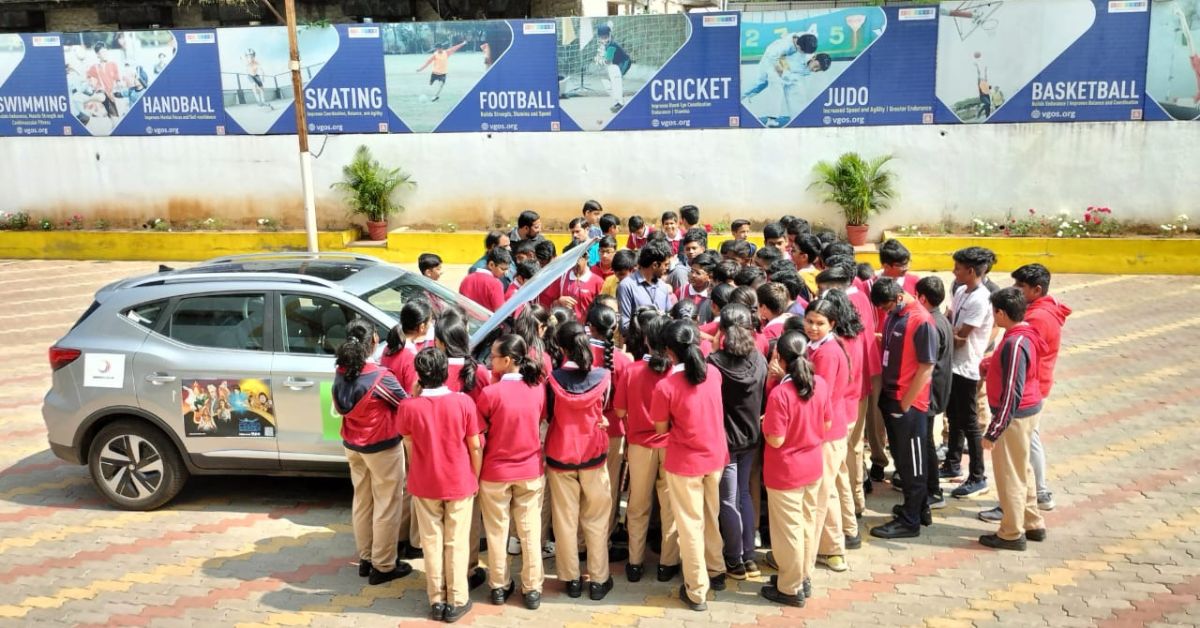
Funding and support
Despite drastically reducing the cost of such long journeys on EVs as compared to petrol or diesel-powered vehicles, there are other major costs to consider, particularly food and accommodation. Funding and support for this journey came from a variety of players including major corporations, universities and other private individuals.
“Major cost was food and accommodation over the period of 70 days. There were some sponsors who supported the journey to cover these expenses — Fortum Charge and Drive (our charging partner), River Comics, Amara Raja Group, Texas Instruments India. MG Motor provided the MG ZS EV electric car for 70 days. Many universities and people helped us accommodate overnight, as well as with the charging of the electric car,” he says.
“This journey wouldn’t have been possible without their support,” he adds.
(Edited by Divya Sethu)
No comments:
Post a Comment